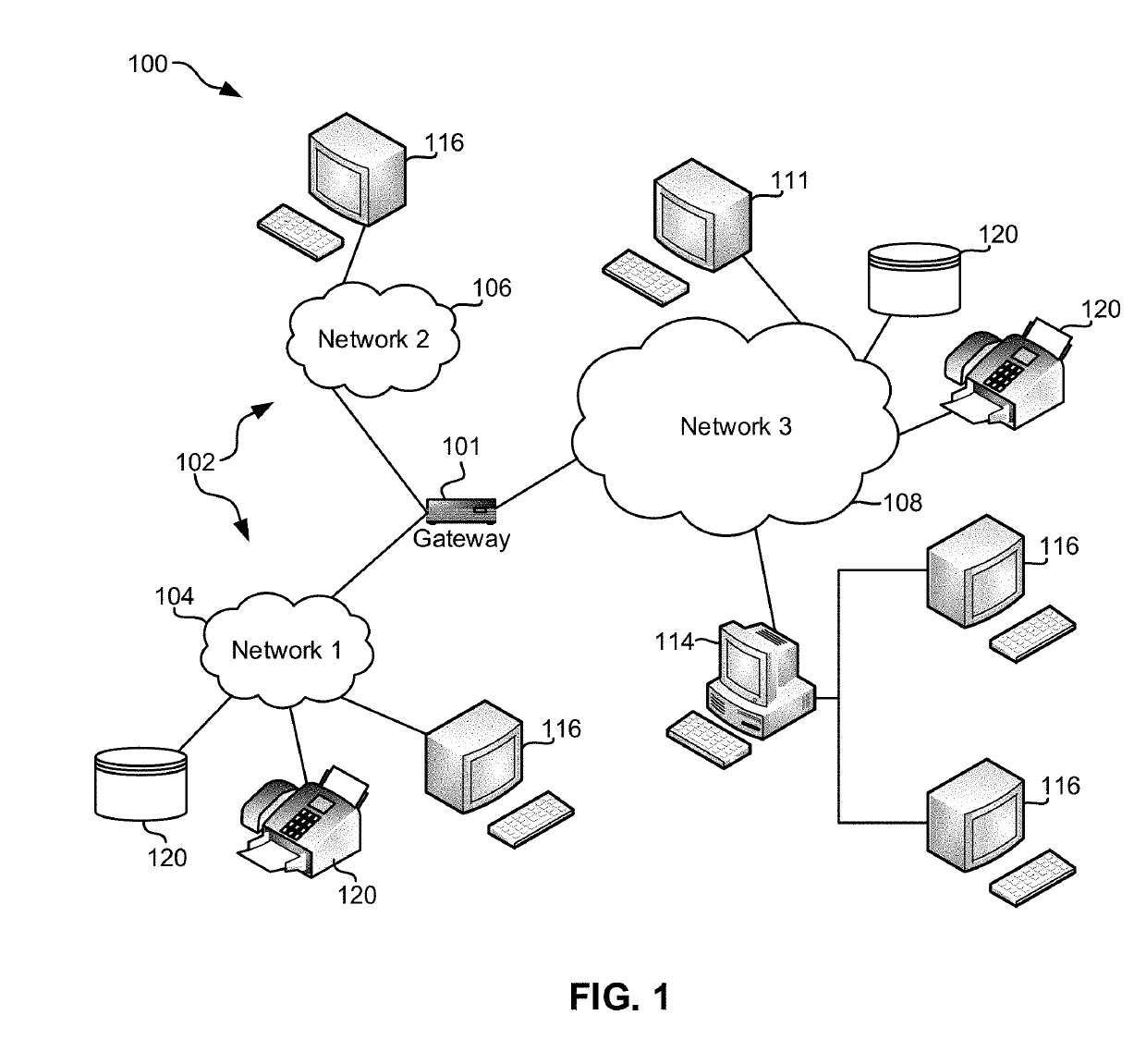Determining functional and descriptive elements of application images for intelligent screen automation
a technology of image and functional elements, applied in the field of image processing, can solve the problems of inability to consistently and accurately determine and invoke the various elements, prevent proper invocation of the desired functions of the various interface elements, and conventional computers are not well-suited to this type of pattern recognition task
- Summary
- Abstract
- Description
- Claims
- Application Information
AI Technical Summary
Benefits of technology
Problems solved by technology
Method used
Image
Examples
Embodiment Construction
[0032]The following description is made for the purpose of illustrating the general principles of the present invention and is not meant to limit the inventive concepts claimed herein. Further, particular features described herein can be used in combination with other described features in each of the various possible combinations and permutations.
[0033]Unless otherwise specifically defined herein, all terms are to be given their broadest possible interpretation including meanings implied from the specification as well as meanings understood by those skilled in the art and / or as defined in dictionaries, treatises, etc.
[0034]The present application generally regards automated image / interface processing, and addresses the problems associated with determining descriptive and functional elements of an application interface to provide a model according to which an automated script / entity may process the image / interface.
DEFINITIONS / GLOSSARY OF TERMS
[0035]It must also be noted that, as use...
PUM
 Login to View More
Login to View More Abstract
Description
Claims
Application Information
 Login to View More
Login to View More - R&D
- Intellectual Property
- Life Sciences
- Materials
- Tech Scout
- Unparalleled Data Quality
- Higher Quality Content
- 60% Fewer Hallucinations
Browse by: Latest US Patents, China's latest patents, Technical Efficacy Thesaurus, Application Domain, Technology Topic, Popular Technical Reports.
© 2025 PatSnap. All rights reserved.Legal|Privacy policy|Modern Slavery Act Transparency Statement|Sitemap|About US| Contact US: help@patsnap.com



